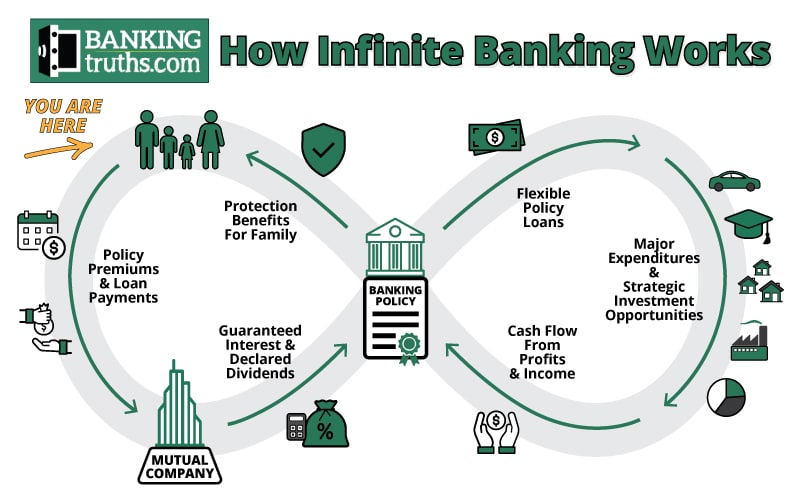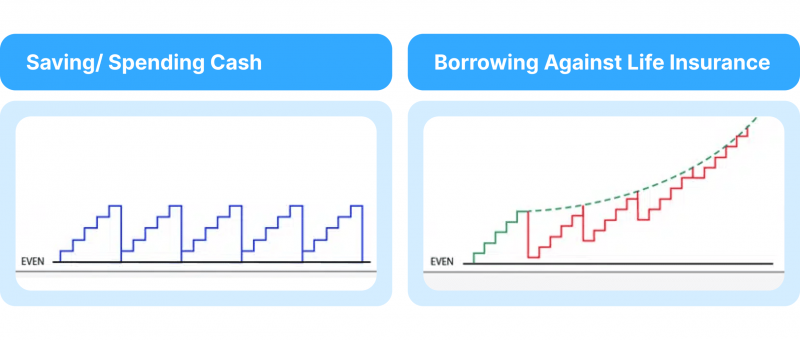All Categories
Featured
Table of Contents
Okay, to be reasonable you're really "banking with an insurance provider" as opposed to "financial on yourself", yet that principle is not as easy to offer. Why the term "unlimited" financial? The idea is to have your money working in several areas at once, instead of in a single location. It's a bit like the concept of acquiring a residence with money, then borrowing versus your house and putting the money to function in one more financial investment.
Some people like to talk regarding the "rate of money", which generally suggests the very same thing. That does not indicate there is absolutely nothing worthwhile to this principle once you obtain past the marketing.
The entire life insurance policy sector is pestered by extremely expensive insurance, large commissions, shady sales techniques, low prices of return, and inadequately educated clients and salespeople. Yet if you wish to "Bank on Yourself", you're going to have to fall to this sector and actually acquire whole life insurance policy. There is no alternative.
The guarantees integral in this product are critical to its feature. You can borrow versus a lot of sorts of money worth life insurance policy, however you shouldn't "bank" with them. As you get a whole life insurance policy policy to "bank" with, keep in mind that this is an entirely separate section of your monetary strategy from the life insurance policy section.
Buy a large fat term life insurance policy plan to do that. As you will certainly see below, your "Infinite Banking" plan truly is not mosting likely to accurately give this crucial economic feature. One more issue with the truth that IB/BOY/LEAP depends, at its core, on an entire life policy is that it can make getting a policy problematic for a number of those interested in doing so.
Infinitebanking Org
Harmful leisure activities such as SCUBA diving, rock climbing, sky diving, or flying likewise do not blend well with life insurance policy products. That might function out great, considering that the factor of the policy is not the fatality advantage, but bear in mind that getting a plan on minor kids is extra pricey than it needs to be considering that they are generally underwritten at a "conventional" price rather than a favored one.

Many plans are structured to do either points. Most frequently, policies are structured to optimize the payment to the representative offering it. Negative? Yes. It's the fact. The compensation on an entire life insurance plan is 50-110% of the initial year's premium. Often policies are structured to optimize the survivor benefit for the premiums paid.
With an IB/BOY/LEAP policy, your objective is not to make the most of the fatality advantage per dollar in costs paid. Your goal is to make best use of the money value per dollar in premium paid. The rate of return on the policy is extremely essential. Among the best ways to make best use of that variable is to obtain as much cash money as possible right into the policy.
The best method to enhance the rate of return of a policy is to have a reasonably small "base policy", and after that put even more cash right into it with "paid-up enhancements". As opposed to asking "Exactly how little can I put in to obtain a particular fatality advantage?" the question becomes "How much can I legitimately put into the policy?" With more cash money in the policy, there is more cash worth left after the prices of the survivor benefit are paid.
A fringe benefit of a paid-up addition over a regular costs is that the payment price is lower (like 3-4% rather of 50-110%) on paid-up enhancements than the base policy. The much less you pay in compensation, the higher your rate of return. The rate of return on your cash money value is still going to be negative for a while, like all cash money worth insurance plan.
It is not interest-free. In truth, it might set you back as long as 8%. Many insurance coverage business only use "straight acknowledgment" financings. With a direct acknowledgment financing, if you obtain out $50K, the returns rate put on the money value every year only uses to the $150K left in the plan.
How To Use Life Insurance As A Bank
With a non-direct acknowledgment finance, the firm still pays the very same reward, whether you have "obtained the cash out" (technically against) the plan or not. Crazy? That understands?
The business do not have a resource of magic complimentary money, so what they give up one area in the plan must be extracted from an additional location. If it is taken from a feature you care much less around and put right into a feature you care extra around, that is a great thing for you.
There is another important feature, normally called "clean loans". While it is great to still have actually dividends paid on cash you have taken out of the plan, you still need to pay rate of interest on that particular car loan. If the returns price is 4% and the finance is billing 8%, you're not specifically appearing ahead.
With a laundry lending, your funding rates of interest coincides as the returns price on the policy. While you are paying 5% interest on the loan, that rate of interest is totally countered by the 5% dividend on the financing. So in that respect, it acts much like you took out the cash from a checking account.

5%-5% = 0%-0%. Same exact same. Thus, you are currently "financial on yourself." Without all 3 of these aspects, this plan merely is not going to work extremely well for IB/BOY/LEAP. The greatest problem with IB/BOY/LEAP is the individuals pressing it. Almost all of them stand to benefit from you acquiring into this concept.
There are many insurance agents talking about IB/BOY/LEAP as a function of whole life that are not actually marketing plans with the essential attributes to do it! The issue is that those that understand the principle best have a substantial dispute of rate of interest and generally blow up the benefits of the idea (and the underlying plan).
Infinite Bank Statement
You ought to contrast loaning versus your policy to taking out cash from your savings account. Return to the start. When you have absolutely nothing. No money in the financial institution. No cash in financial investments. No money in cash money worth life insurance. You are confronted with a selection. You can place the cash in the financial institution, you can spend it, or you can acquire an IB/BOY/LEAP policy.
You pay tax obligations on the passion each year. You can save some more money and put it back in the banking account to start to gain passion again.
It grows over the years with resources gains, rewards, rents, etc. Some of that revenue is taxed as you go along. When it comes time to purchase the watercraft, you sell the financial investment and pay tax obligations on your long term funding gains. After that you can save some more money and get some even more investments.
The money value not made use of to pay for insurance and compensations grows for many years at the dividend price without tax obligation drag. It begins with negative returns, but hopefully by year 5 or two has actually damaged even and is growing at the returns price. When you go to purchase the boat, you obtain versus the plan tax-free.
Bank Identification Number Visa Infinite
As you pay it back, the cash you repaid begins growing again at the dividend rate. Those all work pretty in a similar way and you can compare the after-tax prices of return. The 4th choice, nonetheless, functions very in different ways. You do not conserve any type of cash nor purchase any type of type of investment for several years.
They run your credit and offer you a financing. You pay interest on the borrowed money to the financial institution until the lending is paid off.
Latest Posts
How To Start A Bank
Cash Value Life Insurance Infinite Banking
Is Bank On Yourself Legitimate